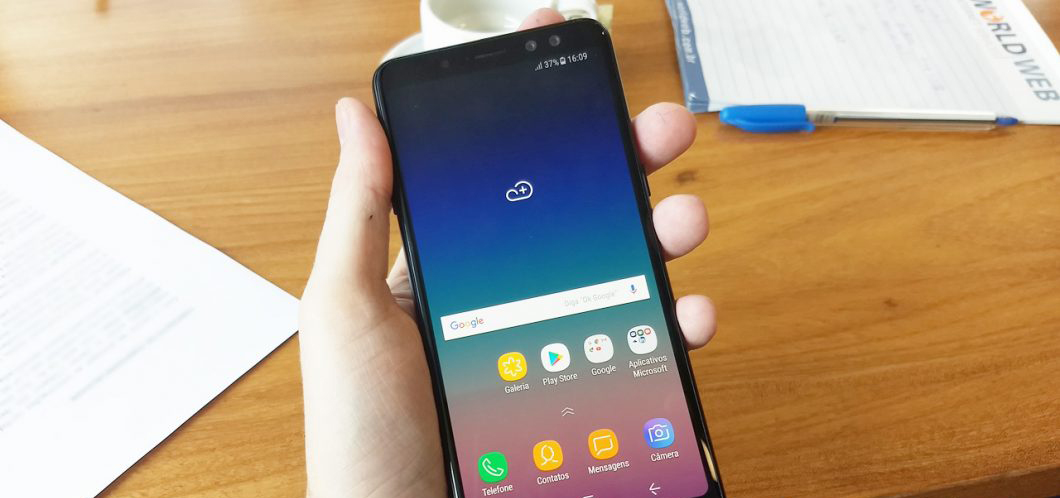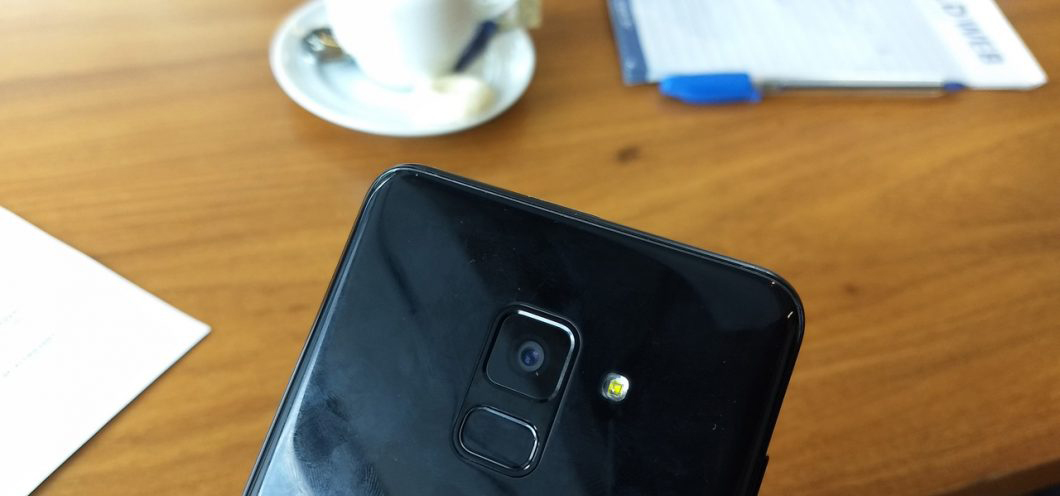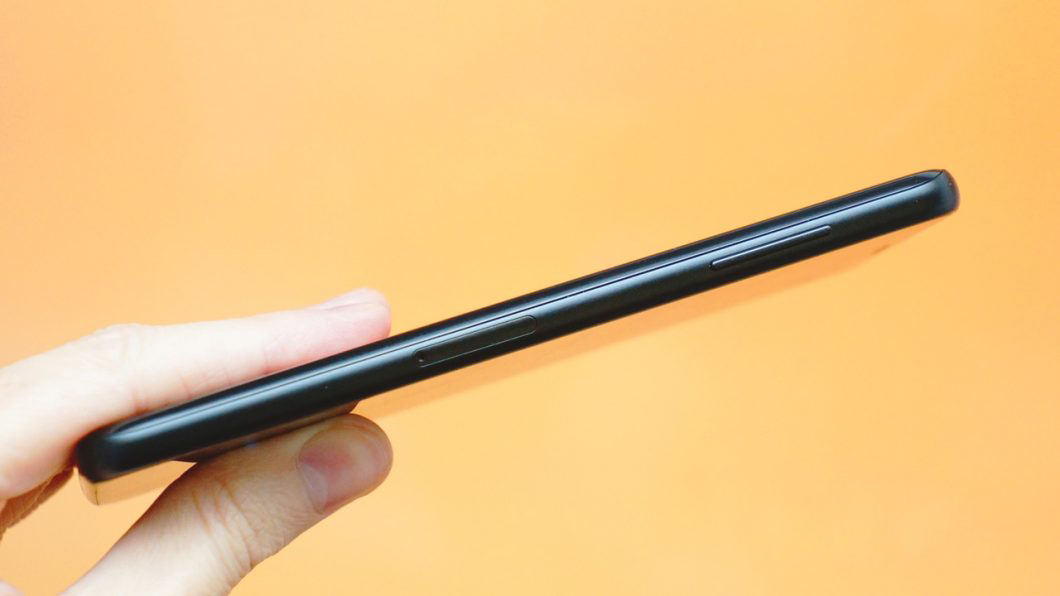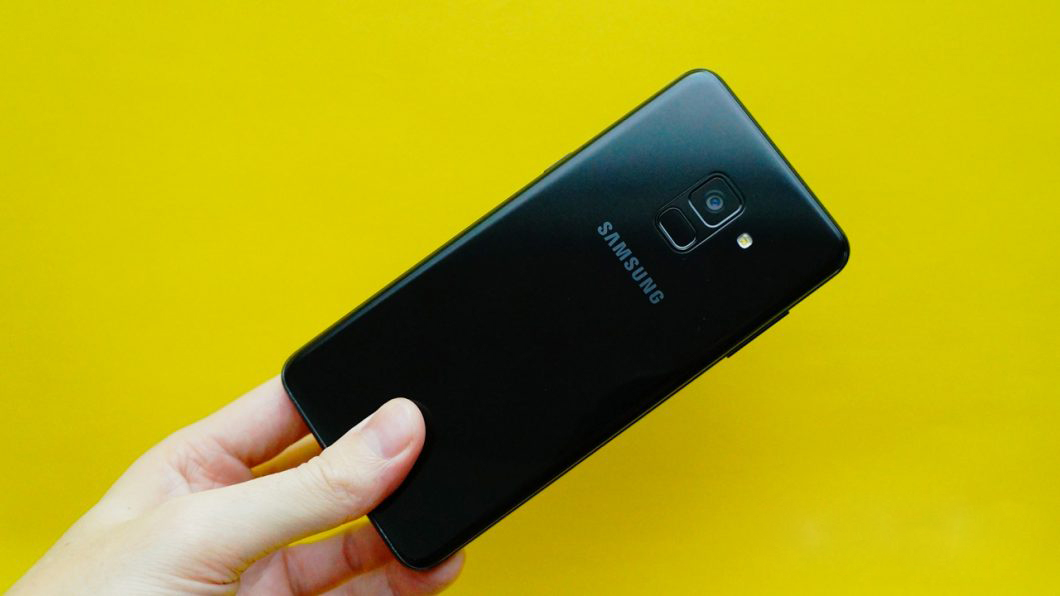Definitely, screen with thin edges and unlock via facial recognition are no longer exclusions of line tops. The two features are among the highlights of the Galaxy A8 and its larger brother, the Galaxy A8 +. Both handsets were launched by Samsung in Brazil on Tuesday (6).
Galaxy A smartphones have always had something of sophistication, but in this regard, the A8 and A8 + are probably the models of the line that are closest to the Galaxy S.
Does it make up? It’s still early to say, but I took a look at the Galaxy A8 and I count my initial impressions on the next lines.
Infinite screen (or something like that)
The first thing you will notice is that the Galaxy A8 has abandoned the front physical button as well as the capacitive buttons that have characterized Samsung’s smartphones for years. All in the name of space usage: the device follows the trend of the infinity display – I do not sympathize with this expression, but it is the one that Samsung uses, so come on.
This detail leaves the Galaxy A8 aesthetically similar to Galaxy S8 or even Note 8. Similar, not the same: to begin with, the A8’s display does not have a sharp curvature on the sides; in addition, the use of space in the upper and lower parts may have improved, but the side edges are still a bit generous, so to speak.

As picture quality, no disappointment. The Galaxy A8 has a 5.6-inch screen with 2220 × 1080 pixels and Super AMOLED technology. As such, the colors are vivid, but without over-saturation. The glow seemed very strong. I still need to test the device in the open, but most likely, viewing the contents of the screen in well-lit environments will not be difficult at all.
You must have realized that the screen is stretched. Despite this, the Galaxy A8 is not a big deal. It fits well in the hands and despite having glass behind – attracting fingerprints that is a beauty -, not easy slip, the merit of the good adhesion of the sides.
Two cameras in front
Dual camera is also a trend, only that, in the case of Galaxy A8, there are two sensors in the front, with 8 and 16 megapixels. The aperture is f / 1.9 on both lenses. Samsung says it prioritized the front because people want more and more clever selfish, blurred background, for example. But what pleases me here is that the A8 has facial recognition support.
This is another feature that I need to test more, but everything seems to work fine. Or almost: in low light conditions (but not too low), I was forced to try two or three times for the unlock to work.
Maybe it is not a technical limitation, but a question of finding the most appropriate distance from the device to the face for recognition to succeed at first. Even so, I suspect that the fingerprint reader will be used the most, for one reason alone: unlocking it is faster.

As the physical button came out from the front, the digital sensor came to rest on the back, just below the camera. As you may have imagined, it is impossible not to put your finger on it, at least in the first few hours of use. Anyway, this seemed to me to be a “less bad” position than the Galaxy S8 sensor (next to the camera).
The rear camera is not dual, but that does not mean it has been neglected. Actually, because of the little I played with the A8, the results are nice, although I’ve only done tests in good lighting conditions. The specifications themselves are decent: the camera has 16 megapixels and apertured f / 1.7 lens.
Hardware and battery: that distrust of light
Despite the robust look and compelling array of features, the Galaxy A8 is an intermediate smartphone. Premium, true, but still in the middle. This is made clear by the hardware: Exynos 7885 processor (six Cortex-A53 1.6 GHz and two Cortex-A73 2.2 GHz high-performance cores), Mali-G71 GPU, 4 GB RAM and 64 GB internal space.

Everything went smoothly in the first contacts with the device. But only the tests with demanding applications will tell if the Galaxy A8 is breathtaking. Anyway, we should not expect performance similar to that of a device with Snapdragon 835, for example. At most, the Exynos 7885 faces a Snapdragon 660, which is enough.
What makes me a bit suspicious is the battery: it’s 3,000 mAh (3,500 mAh on the A8 +). Far from being a bad capacity, but something more incremental would surely make a big difference. Either way, your smartphone supports fast recharging and does not appear to have harmful autonomy.
Same sin was the Samsung have not included Android 8.0 Oreo here. Although it was unveiled at the end of 2017, the A8 comes with Android 7.1.1. It’s okay what device is going to be updated, even so, this is the kind of decision that gives a chill in expectations.
What else?

It is also worth mentioning that the Galaxy A8 supports two SIM cards plus a microSD, has IP68 certification (ie the device has protection against water and dust), comes with USB-C port and headphone jack, supports Samsung Pay and is compatible with the Bixby wizard.
Overall, the A8 is a well-equipped handset and a strong candidate for the most interesting intermediate title currently available in Brazil.
The details you check out soon enough. The full review of the Galaxy A8 is already underway. Meanwhile, say in the comments what you want to know about the device.
